 SELECTED
ISSUE
SELECTED
ISSUE
|
|
Leisure Management - Lucky dip

Heritage

|
|
| Lucky dip
|

The UK has a rich network of historic pools,
but over the years many have closed down.
Now, thanks to a renewed appreciation
of these architectural beauties, they are
coming back to life. Kath Hudson reports
|
|
|
|
Thanks to the 1846 Baths and Wash House Act, the UK has one of the largest collections of historic swimming pools in the world. Almost a century of municipal pool design led to hundreds of pools being created, representing ambitions in both architecture and the improvement of public health.
Sadly, in so many cases, their beauty and grandeur has faded, and they have become costly burdens for those who have to keep them. Over the years, as many local authorities failed to make them operationally viable, more than half of the UK’s historic pools closed.
Fortunately, the tide now appears to have turned. Despite years of closures and budget cuts, an increasing number of historic pools are being brought back to life. “I like to think that we’re on a roll,” says Gill Wright, founder of Historic Pools of Britain, a charitable organisation which aims to share best practice among historic pools and raise their profile. “The rate of closures has slowed down and, despite the difficult economy, we are seeing a resurgence of historic pools.”
This welcome turn of events is attributable to a few factors, according to Wright. Firstly, a growing interest in outdoor swimming led to a resurgence in historic lidos, with many being restored, and this momentum has spilled over to indoor pools. Secondly, historic pools have been championed by leisure trusts and community groups who have taken on the management and have thought creatively.
“A successful project needs a group of determined individuals behind it, as well as wider community support; it’s a massive uphill struggle unless the local authority backs it,” says Wright. “But in many cases we see how keeping a historic pool running engenders a sense of pride and represents something really positive in a community. They can also become destinations in their own right and contribute greatly to regeneration.”
Such a setting adds another dimension to the swimming experience which many will appreciate, but as Wright points out, the baths often embody important and interesting social history: “Under local authority management, historic pools were generally not presented as interesting buildings in their own right, but they are beautiful and historic and, with the right marketing, can be destination cultural attractions.”
Wright is part of a team which has been trying for years to resurrect Victoria Baths in Manchester. Created in an era of gender and class segregation, they have an interesting story to tell and are currently open for use as a heritage and events venue. However, Wright is committed to seeing the baths themselves open again one day and funding is currently being sought based on a new, robust business plan to re-open the Turkish baths as the next phase of the building restoration.
Elsewhere in Manchester, Withington Baths and Leisure Centre, which was taken over by the community to prevent closure in 2015, is hopefully on track to be restored to its former Edwardian glory. It has recently been awarded £82,000 to scope out the extent of restoration needed for the roof and design programmes and activities to educate members and visitors about the baths’ heritage. Full restoration will be dependent on a second lottery grant of £1.2m.
It is heart warming that these quirky and charming buildings are now undergoing a renaissance and that there are now enough success stories to show how these historic buildings can be made sustainable.
|

Gill Wright, founder of Historic Pools of Britain "Keeping a historic pool running engenders a sense of pride and represents something really positive in a community" - Gill Wright, founder of Historic Pools of Britain
EXHIBITION
Into the Blue: The origin and revival of pools, swimming baths and lidos
V&A + RIBA Architecture Display Gallery, Victoria & Albert Museum, London, UK.
20 July 2019 – 19 April 2020.
From Roman baths and Victorian bathhouses to contemporary swimming spaces, the V&A + RIBA Architecture Partnership explore the architectural, cultural and social importance of swimming pools and lidos in the UK..
With the restoration and regeneration of historic pools becoming a focus for many communities, this timely display will look at how for centuries architects have designed inventive places for bathing, and what the future holds for this building type.
Jubilee Pool: Art Deco lido saved by the community
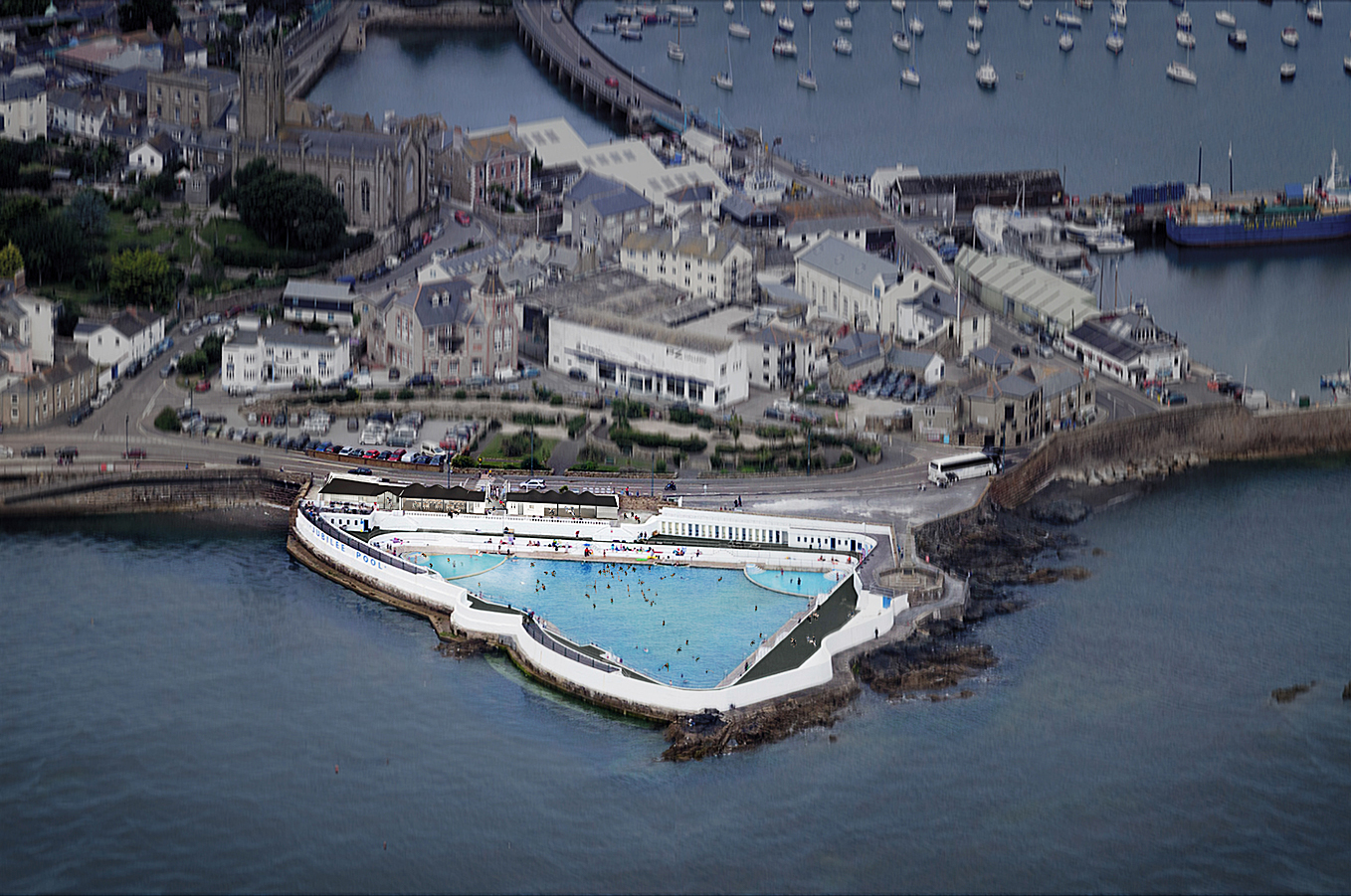 Geothermal energy will be used to heat the seawater pool PHOTO: ScottWhitbyStudio Cornwall’s Jubilee Pool, an iconic Art Deco lido overlooking St Michael’s Mount, is an example of a pool on its way to closure, nursed back to life by a community group and now a destination for locals and tourists alike.
Built to celebrate King George V’s Silver Jubilee in 1935, by the 2000s the local authority was struggling to keep it going, so when it suffered storm damage in 2014, it was at serious risk of closure. A community social enterprise, Friends of Jubilee Pool took over its operation in 2016.
After a £3m fundraising campaign, the lido was refurbished, but with a short season the finances remained on a knife edge. Friends of Jubilee Pool thought outside of the box to come up with a strategy to safeguard its future.
In 2017, ScottWhitbyStudio were asked to put together proposals to protect the future of the pool by providing year-round facilities, using geothermal energy to create the UK’s only heated sea water pool. In September 2018, planning permission for the proposals was granted for the works, which include the creation of a heated bathing area, the updating of the existing structures and the creation of an enlarged café and multi purpose community hall.
"We are working with Geothermal Energy Ltd to make it a year round pool," says manager, Abbie Cranage. "This means we can go from a four month operation to a 12 month one and see a 25 per cent uplift in annual visits."
The project was delayed due to issues with the well drilling, but is due to be completed by November 2019, with the geothermal heat being turned on then.
Architects ScottWhitbyStudio are strengthening the historic lido buildings against the ‘aggressive sea front environment’ and infilling the spaces between the existing structures with double glazed bi fold doors to create the extended cafe area and community hall. These will open on to a new public promenade, which will be open year-round.
"We’re delighted to have the opportunity to work with an energetic local community on this important and much loved listed building," says founder Alex Scott-Whitby. "‘We hope these proposals will lift Penzance from being one of Britain’s most deprived areas to become the spa town of Cornwall."
This work was made possible by a Crowdfunder campaign which raised £530,000.
This was matched by investors, and will enable the development of further revenue-generating amenities including a function room, a room for community use, a café, a restaurant bar and retail space.
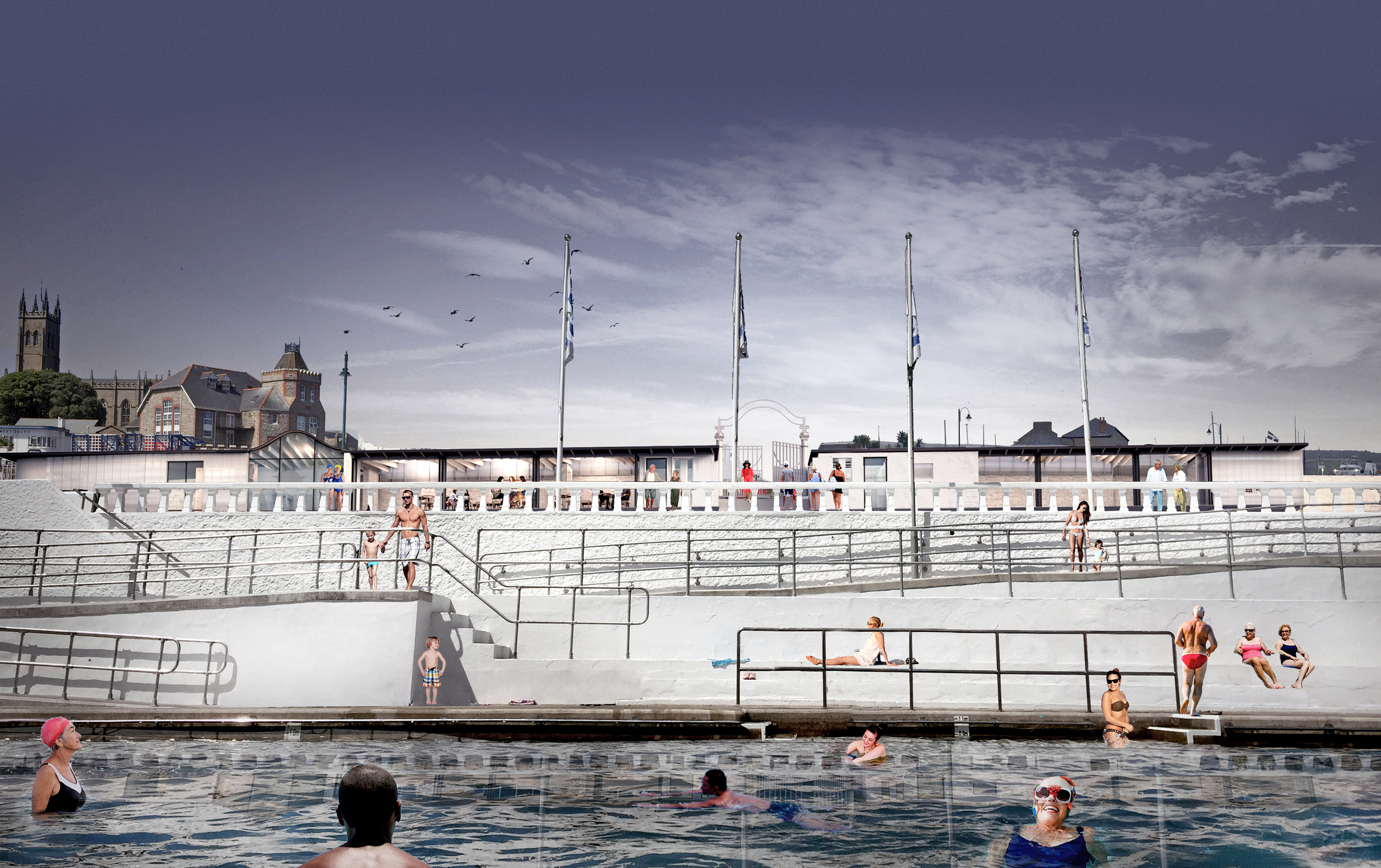 An extended cafe and community hall opens onto a public promenade PHOTO: ScottWhitbyStudio
Newcastle City Baths: Brought back to life by a leisure trust
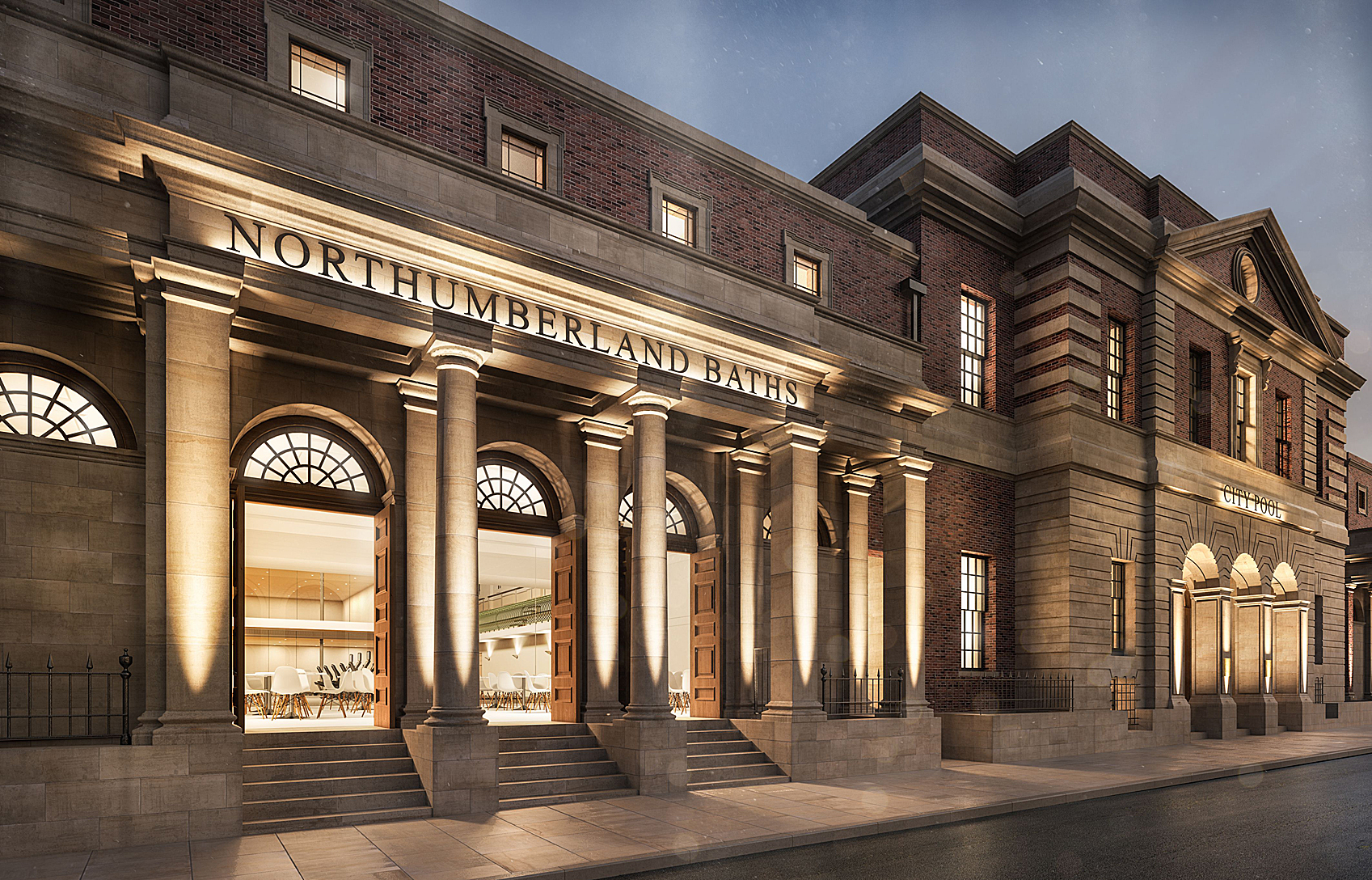 Many of the building’s original features are being retained Tim Mills of Fusion Lifestyle, which runs more than 90 leisure facilities including six outdoor pools, agrees the popularity of lidos has ignited a wider interest in historic pools. Since completing its first lido refurbishment in 2006, Fusion Lifestyle has been involved with a number of historic pool projects.
Currently it is in the final stages of bringing the Grade II listed, neo-Georgian Newcastle City Baths back to life, together with Napper Architects.
The leisure charity took out a long term lease, after the baths were closed by the council five years ago and embarked on a £7.5m restoration, due to be completed by the end of the year.
The two pool halls are being restored, one as a swimming pool and the other as a health and fitness suite. A studio and bistro are being added, and the Turkish Baths are being completely restored with the addition of a new state-of-the-art spa with treatment rooms. The buildings are Grade II listed and a conservation plan prepared by North of England Civic Trust in 2010 identifies them as being of high architectural and historic interest.
Mills admits there are many challenges with these projects. “These projects are not simple or straightforward,” he says. “But, they are challenging, unique and interesting.
“We’re very aware of how important these grand old buildings are to the local community and it’s rewarding to bring something special back: they tend to have a very loyal following. Swimming in one of these great pieces of architecture is a unique and special experience and they have the potential to be a city, or regional, attraction.”
Always interested in projects involving a special building which has fallen into disrepair and is in danger of being, or is already, closed down, Fusion Lifestyle has two more renovations lined up, for a lido in Ipswich and some indoor baths in Bristol.
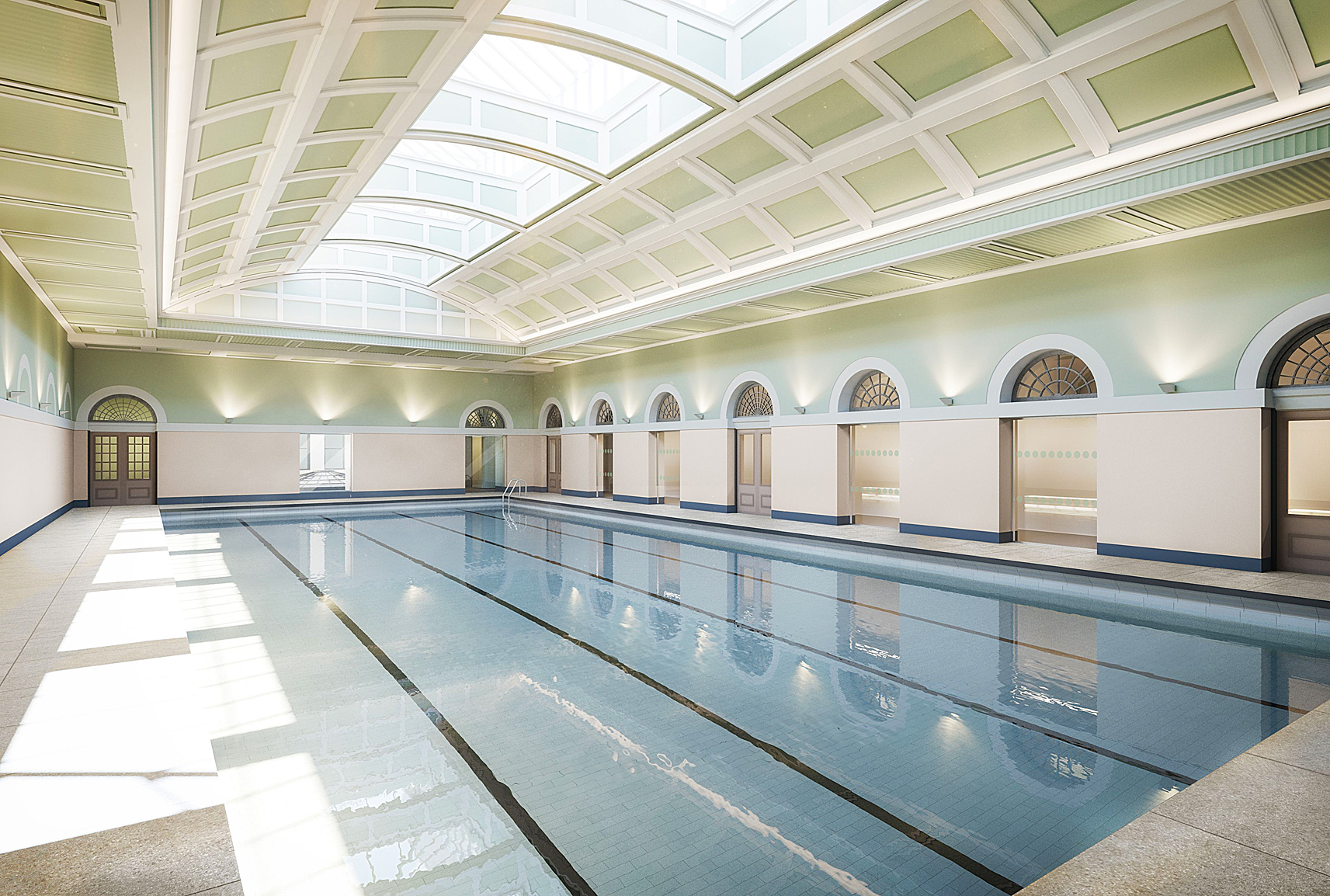 Many of the building’s original features are being retained
Sir Doug Ellis Woodcock Sports Centre: University uses modern gym to make pool sustainable
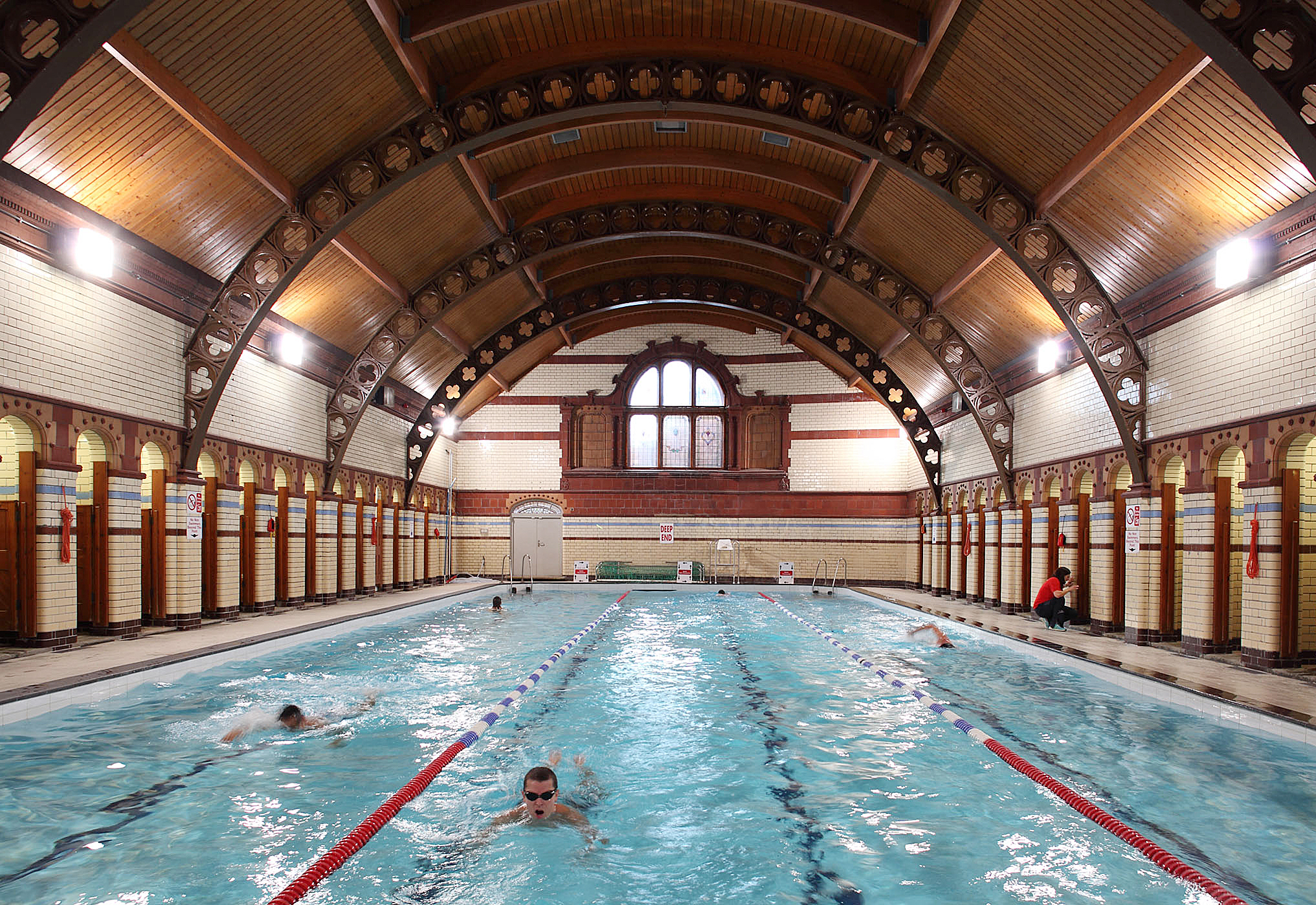 The Victorian pool is one of the oldest still operating in Britain Although refurbishment makes the pools easier to sustain, they are still far from straightforward and extra money has to be set aside for the inevitable maintenance and repair work which comes with old buildings. Subsidising the old buildings with new health and fitness facilities is a good model.
Historic Pools of Britain founder Gill Wright says the Sir Doug Ellis Woodcock Sports Centre, at Aston University in Birmingham, is a great example of the new and the old working together. “This is the best of both worlds: a state of the art, profitable gym, complemented by a unique historic pool,” she says.
After being acquired by the university from Birmingham City Council for £1 in 1980, the site was redeveloped as a sports centre. However, by 2000 it was falling into disrepair and since the building is Grade II listed, the university had to take the plunge. In 2009, Warwick-based architectural practice Robothams were appointed to design the university’s refurbished sports facility within the listed Woodcock Street baths.
The project involved repairing major structural defects in the fabric of the original building to create a new centre. To cover the costs of the pool, additional income streams were added with a gym, two sports halls, sauna, steam and dance studios. The management is hoping to add a third sports hall, a larger free weights training area and a functional training suite as part of a wider redevelopment of the campus.
Marshall Street Baths: Happy ending
 Ian Eggleton worked on the project while at Finch Forman Architects The 1930s Marshall Street Baths in Soho are another success story. Mothballed by the City of Westminster in 1997, due to the amount of investment required, they were reopened in 2007, after a refurbishment carried out by Finch Forman Architects which involved further health and fitness amenities being added.
With original marble floors and an impressive barrel vaulted ceiling, the baths epitomise everything there is to love about historic pools. "We are very fortunate to have a historic pool at Marshall Street. It’s a real gem in the heart of London," says general manager Louise Williams. "The pool, arched ceiling and natural light attract a lot of interest from photographers, fashion designers and film crews who all appreciate its beauty as an amazing backdrop to their work. We have had James Nesbitt and Sport England filming here!"
"‘It was a privilege to be able to work on such a beautiful and well-loved building, one of a dozen or so public baths designed by AWS Cross across London in the early 20th century," says architect Ian Eggleton, who worked on the project while he was an associate with Finch Forman Architects. "It was exciting to be able to bring the pool back to life after a 10 year period of closure, especially with it being in such a fantastic central location. Also, it was personally special to me as I had written my postgraduate thesis about public bathing and studied examples of AWS Cross pools as part of that work.
"The main challenge of the project was incorporating modern changing and showering facilities into an existing building on a tight urban site. In particular, the spatial requirements of making the pool fully accessible. This necessitated the compromise of removing the bleacher seating from the sides of the main pool and building blocks of modern facilities. These blocks were then faced with large format glass tiles which reflect the original interior and the water."
Williams says day to day swimmers find the pool a joy to swim in. However, beauty doesn’t come easy and running the pool is often a labour of love. "The marble has to be cleaned by hand and some modern cleaning agents and techniques aren’t suitable," says Louise Williams.
"As a listed building, we have to plan ahead for maintenance issues and upkeep. Much consideration goes into finding the approved materials, for example, it took us eight months to source and fit the poolside tiles. That said, it’s worth every minute of extra care."
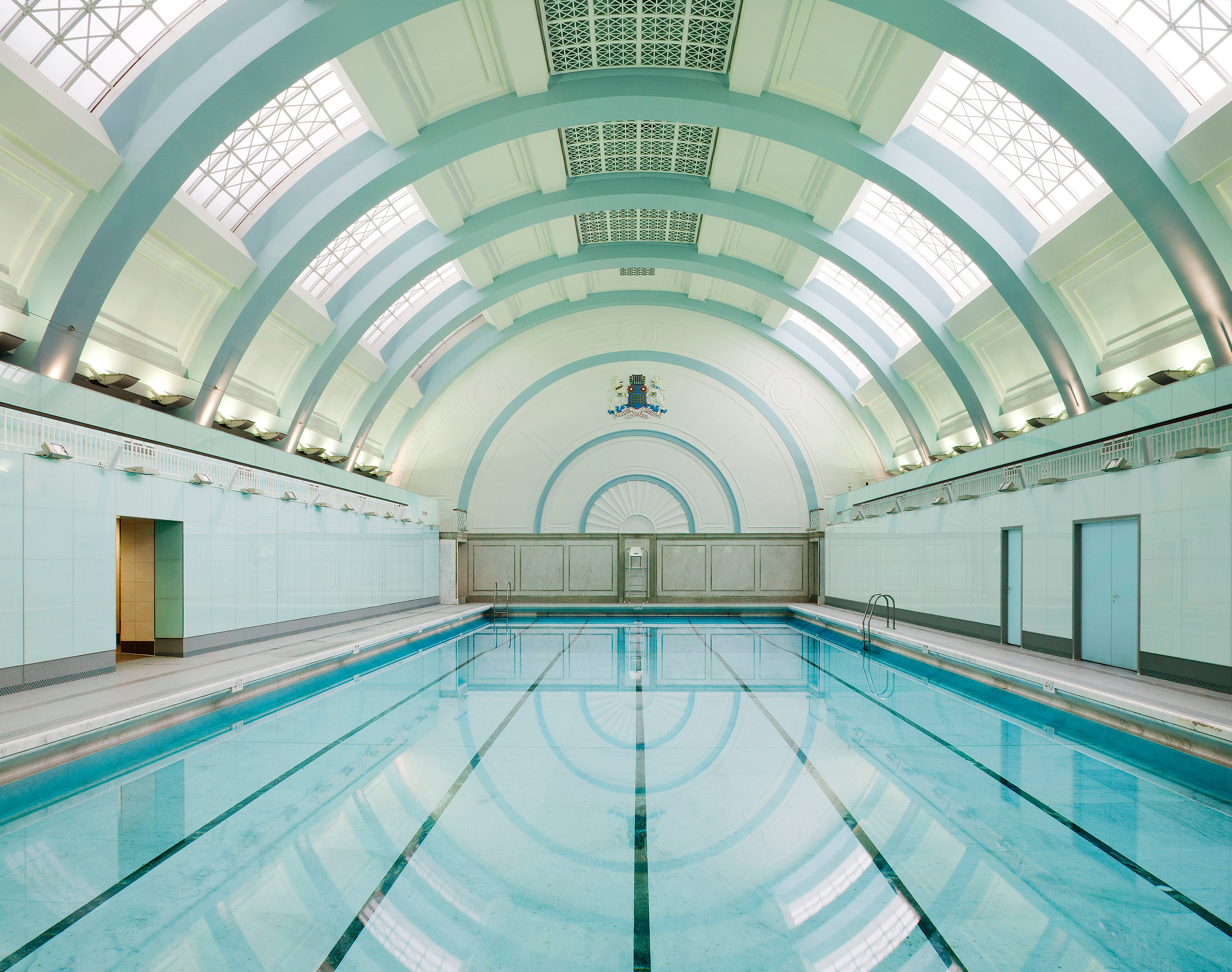
The 1930s pool features marble tiles and a barrel-vaulted roof 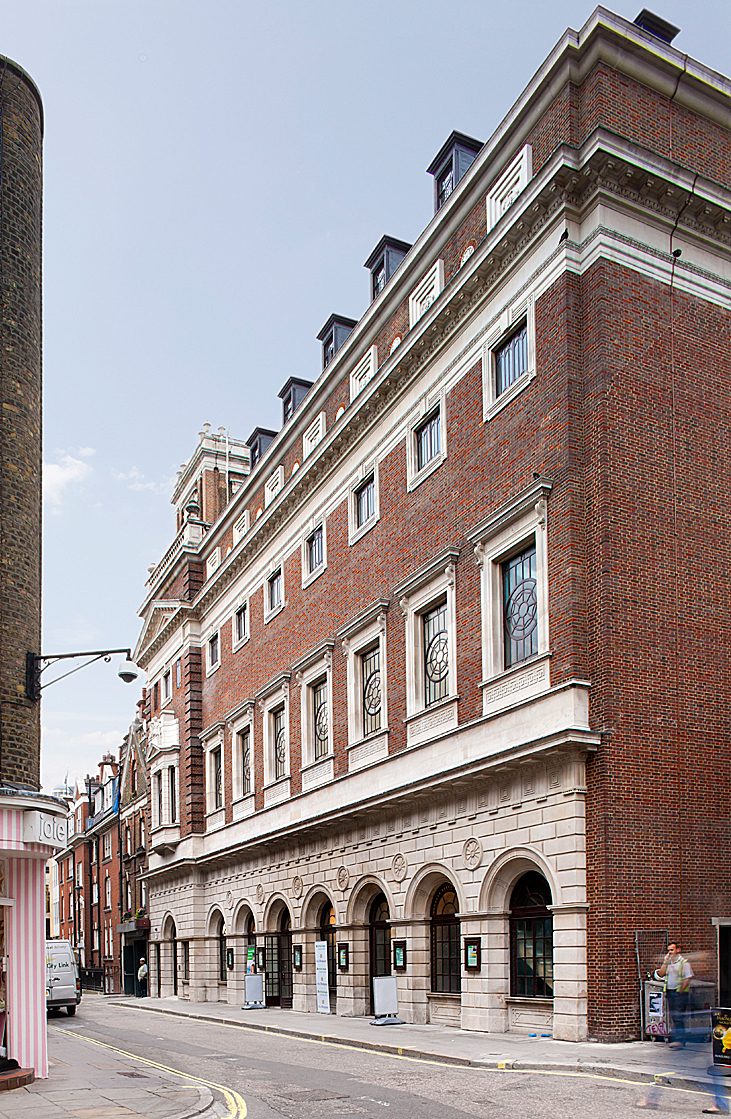
Ian Eggleton worked on the project while at Finch Forman Architects
|
|
 |
| Originally published in CLADmag 2019 issue 3
|
|
 |
|